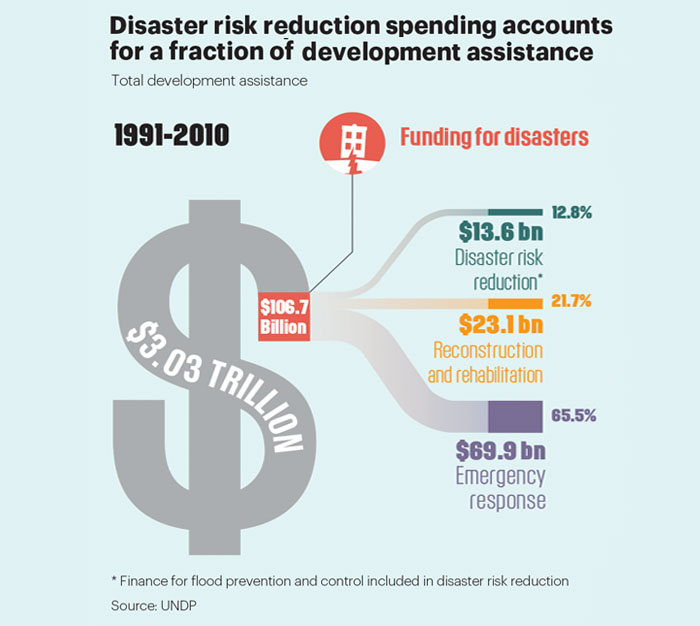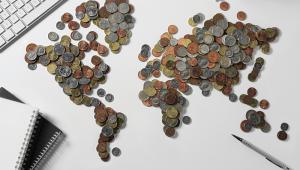Following the storms that swept across the US and Asia, Emily Wilkinson, senior research fellow at the Overseas Development Institute, said countries affected by such events should invest in better mitigation infrastructure.
“Critically, there are opportunities in post-disaster recovery to build things back differently.”
The phrase ‘building back better’ is used by development agencies across the world. Wilkinson said it reflects the opportunity to ensure reconstruction is fit for long-term recovery.
“A lot more needs to be done to mitigate and reduce the risks before disasters happen,” she told PF International.
Wilkinson said ODI research [see below] has found that the majority of development assistance for natural disasters goes to emergency response (65.5%), while only 12.8% goes to disaster risk reduction, such as flood prevention.
page7.jpg

The Overseas Development Institute, Finance for reducing disaster risk: 10 things to know
According to the World Bank, the benefits of ‘building back better’ could save countries globally up to $173bn a year.
Some countries have budget reserves for disasters.
Mexico’s FONDEN fund maintains a reserve of $1bn, the equivalent of 0.13% of gross national income.
Japan also holds reserves of 350bn Japanese yen ($3.12bn) – 0.36% of the budget.
But these reserves typically do not cover unexpected events and are based on the annual average needed for disaster recovery.
Mexico, for example, has additional insurance that covers $400m, but if a disaster inflicts more damage it has no finance for recovery.
Last year’s record tropical storms left many already indebted small states looking for finance to recover and relying heavily on aid.







